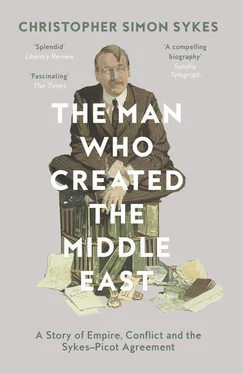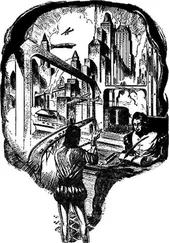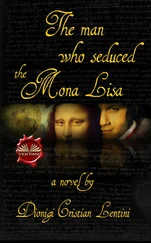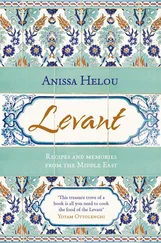The third day of the trial began with Lord Russell asking Tatton to make two copies of the letter of 2 January, with two different pens. While he was doing this, Sir Edward Clarke opened the case for the defence. The question before the jury, he said, was a simple, if serious, one. Did Sir Tatton sign the notes, or were they forgeries by Lady Sykes? ‘A case more painful to an English gentleman,’ he continued, ‘could not be imagined.’ Called to the stand, Tatton ‘gave his evidence in a low voice with a slow, nervous, hesitating manner, and kept repeating his answers over and over again, repeatedly fingering the Bible which lay on the desk before him, and occasionally raising it and striking the woodwork sharply to emphasise what he said.’ He had never seen the notes and he had never signed them, and he had certainly not written the letter of 2 January. He had never had any need to borrow money, he said, preferring to keep an overdraft at the bank, which could run to any amount, since the bank had securities. After the advertisement had appeared, he had agreed to make a final payment of his wife’s liabilities ‘to avoid scandal! To avoid scandal! To avoid scandal!’ 23
Cross-examined by Mr Walton, Tatton caused much amusement by asking if his lawyers could ‘refresh his memory’ about the details of the alleged Monte Carlo forgeries. So great in fact was the laughter when Mr Walton said ‘No!’, that Lord Russell had to threaten to empty the courtroom. Walton then did his best to try and show that Tatton really had very little memory of what he had signed and what he had not, but he could not sway him from the basic fact that when it came to the Jay notes, he was adamant that he had nothing to do with them. The copies he had made earlier of the 2 January letter were then shown to the jury, Tatton complaining that the pens he had had to write with were too thin. When Mr Walton said that that was because the original was written with a quill pen, Tatton stated, ‘Well, I have not used a quill pen for 40 years,’ 24leaving his interrogator floundering.
Mr Walton, who saw his case collapsing, now revealed that Mark was in court, and, though he realized that ‘it was a painful thing to ask him to give evidence on the one side or the other’, 25he invited Lord Russell to call him onto the stand so that he might be questioned as to the veracity of these dates. This the Lord Chief Justice refused to do, though he told him that he could do so himself if he so wished. Though at first Walton decided against this course of action, on the morning of the following day, destined to be the last of the trial, he changed his mind.
It was a devastating experience for Mark to be forced into the witness box to testify that one of his parents was a liar, and, as Sir Edward Clarke told the jury in his summing up, his evidence was so vague and therefore so inconclusive that he might have been spared the ordeal. It was given in a barely audible whisper. In his final address, Sir Edward gave no quarter to Jessie, whom he described as a woman of ‘discreditable character’, for whom there could be ‘no sympathy and perhaps no credence’. When it came to the turn of the counsel for the plaintiff, Mr Walton accused Tatton of being a man without honour. ‘The disaster of victory,’ he told the jury, ‘would be infinitely greater than the disaster of defeat. To himself, if he won the case, there would be the degradation of the wife of twenty five years, to Mr Mark Sykes the dishonour of his mother, and to Lady Sykes, it might be, other proceedings in a criminal court. At present Sir Tatton might wish to win this case, but in the evening of his days would he wish his name to be clouded with the dishonour of his wife?’ 26
In the end the jury took only forty-five minutes to decide that ‘The letter of 2 January, 1897, was not in the hand of Sir Tatton Sykes.’ As the newspapers were quick to point out, this verdict left Jessie in an unenviable position. ‘The person upon whom the verdict of the jury fell with such crushing force last week,’ commented The World , ‘stands arraigned by that verdict, on a double charge of forgery and perjury; and any shrinking from the natural sequel of such arraignment will certainly be interpreted as a sign of partiality in the administration of justice.’ 27Luckily for Jessie, there was never any criminal prosecution brought against her, because of the problems arising from the fact that the main witness against her would have been her husband. The horrendous publicity was punishment enough, and the fact that public sympathy lay with Tatton. ‘Sir Tatton Sykes may not have been the most judicious of men in the management of his household,’ commented the Times’ Leader of 19 January, ‘but if his evidence is to be believed, as the jury believed it, he has shown great forbearance for a long time.’ 28A few days later Sydney Bowles wrote in her diary, ‘The verdict in the Sykes case was for Sir Tatton, which has hit Lady Sykes and Mark very hard. The latter told George he is not ever going to speak to or see his father again, and he will never go to Sledmere again so long as Sir Tatton lives.’ 29
Chapter 3
Through Five Turkish Provinces
Devastated by the outcome of the trial, and simmering with anger, Mark made plans to travel abroad for a few months. He needed to get away from the lawyers, a profession he would despise for the rest of his life, and to put as much distance as possible between himself and his parents. His education had suffered from the stress of the trial, the result being that he had failed the ‘Little-Go’ exam that all Cambridge students were required to take in their second year. Luckily for him, the Rev. Swain attached little importance to this. ‘He could have taken the ordinary degree easily enough,’ he noted, ‘if he had set himself to do it, but it never seemed to him worth doing. He seemed to be always looking round the University to see how it might best serve him, and to follow his own conclusions without considering the views of other people or whether his practice were usual or unusual. He seemed to me to do this with great sagacity … The power of close application to what did not immediately interest him, if he ever had it, was lost before he appeared at Cambridge.’ 1
His plan, supported by his tutors, who understood how much both he and they would get out of the trip, was to return to Palestine and Syria, scene of many of his childhood travels. With the help of A Handbook for Travellers in Syria and Palestine , first published in 1858 by the London publishers John Murray, he mapped out a journey that would take him as far east of the river Jordan as was possible, before striking north to Damascus through the remote and mountainous Druse country of the Haurân. In preparation he also persuaded the distinguished lecturer in Persian Professor Edward Granville Browne to give him some basic instruction in Arabic, and though Mark was soon reporting to Henry Cholmondeley that his lessons were progressing well, Browne let it be known that he considered his new pupil to have ‘the greatest capacity for not learning he had ever met!’ 2Unfortunately for Mark, scarcely was he set to leave for the East than his mother got wind of his intentions and tried to attach conditions to her parental blessing. ‘I forgot to tell you,’ he wrote from Cambridge to his first cousin, Henry Cholmondeley, the Sledmere agent, ‘… my mother was quite willing for me to go if I took the maid and herself with me, which is of course ridiculous’. Barely concealing his anger he added, ‘The only object of having me here is to come down and extort a few shillings or pounds as the case may be, to read all the letters she may find in the rooms and return to London …’ 3
He left without her, accompanied only by his servant, McEwen, travelling first to Paris, and from there taking the Orient Express to Constantinople, a journey of three and a half days. He arrived at the Pera Palace Hotel, however, only to find three telegrams from his mother that had reached there before him.
Читать дальше











